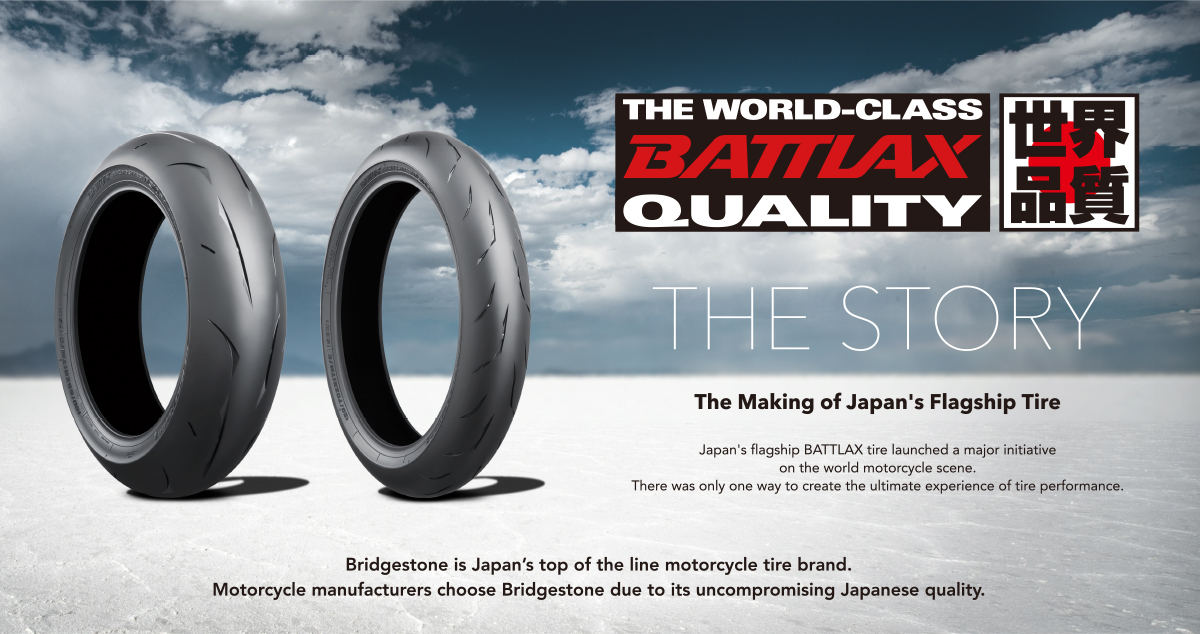

New concept for YZF-R1: a shift from the fastest on winding roads to
'the fastest on the circuit'
The benchmark for development was: "Can we win?" A high-grip tire was
chosen to meet the aggressive requirements
What steps Bridgestone took during the tire development process
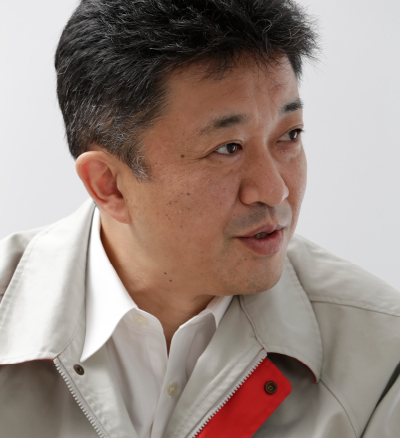
General Manager,
Motorcycle Tire Development Department,
Bridgestone Corporation
Shinji Aoki
Since joining Bridgestone in 1993, has worked as an engineer committed to tire development for motorcycles, joining the Race Division in 1997, including development of the world’s most demanding motorcycle race tires. Current leader of the design unit working on original equipment tires
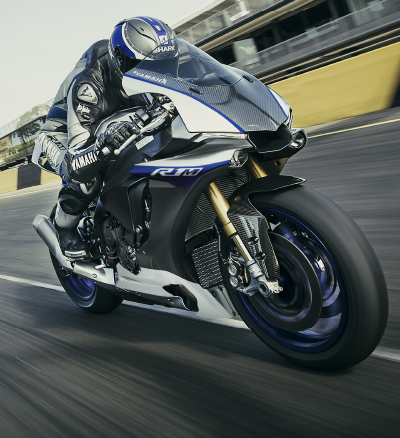
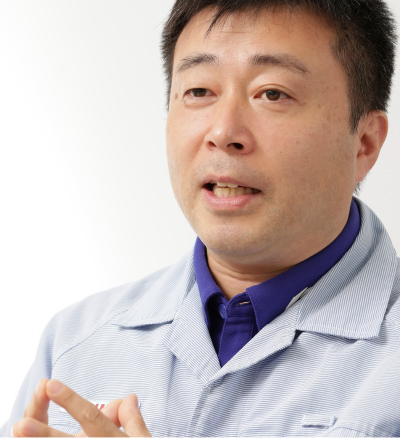
Project leader
SP Development Division
YAMAHA MOTOR Co., LTD.
Keisuke Hirano
Current project leader (formerly the project chief for body design during development).
Development was managed by verifying data and impressions related to rigidity balance for enhancing mobility and lightness of operation during riding.
After the YZF-R1M set its sights on conquering circuit courses, it wore Bridgestone's new tires, the RS10 at the 2014 Milan Show (EICMA). What were Yamaha’s expectations for Bridgestone tires?
"Before making any offer for the tires, our overall concept was "NO EXCUSES", though we didn't really use it in negotiations. For example, motorcycle test comparisons in bike magazines from overseas (mostly European) don't pull any punches; excuses like "the tires weren't high-grip so it didn't score well" won't fly. That's why we decided to go with high-grip from the get go" says Mr. Hirano.
In fact, the YZF-R1 series was never equipped with a high-grip as original equipment. The same was true for Bridgestone - it had never before provided high grip tires as original equipment. We were just starting to develop a new product and so I suggested using it. However, street-bike tires just did not fit the new R1. The RS10 is actually in the ‘street-racing’ category, but we have never used this type for original equipment tires. Despite this, we changed our approach and started development based on the technology behind racing tires " says Mr. Aoki.
Since there is much confidential information during the development of new vehicles, Bridgestone was forced to run tire evaluation tests on older YZF-R1 models. Using the disclosed information provided by Yamaha on the new model they, and Yamaha's evaluation of the tire test results, development continued by keeping the overall image of the R1 model in mind.
"After seeing Yamaha's requests and evaluations, we started to feel that a considerable amount of MotoGP technology, honed during the world’s most demanding motorcycle race, was reflected in this machine."
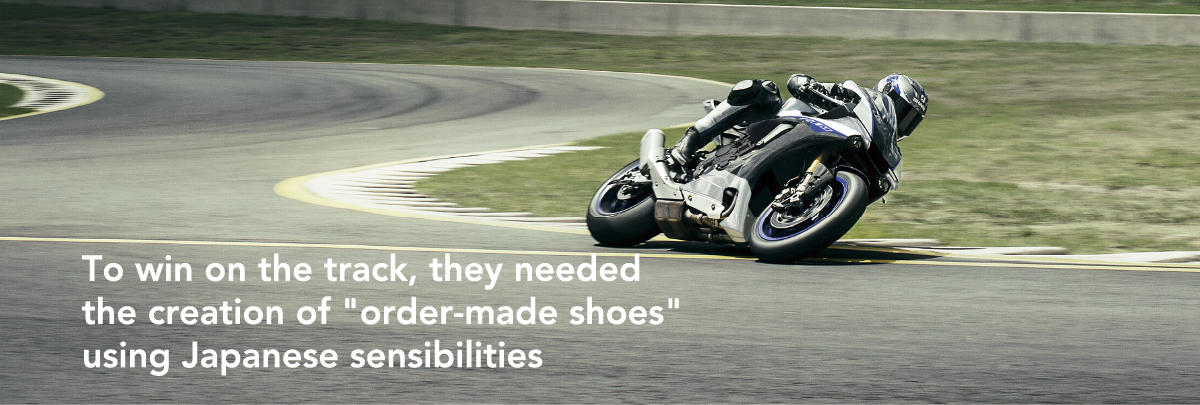
In fact, during development of the YZF-R1M, many of Yamaha's key development members test-drove the factory-backed model. Mr. Hirano was one of them. The team pursued how certain impressions one can only get by actually riding should be reflected on the relevant sections. This was true for the body of the bike as well as the tires.
"Our side mentioned nothing about the MotoGP," says Mr. Hirano, but Bridgestone had independently decided to pour in the race tire technology that they had attained through experience from the world’s most demanding motorcycle race into their new original equipment tires.
"There are two major requirements for tires - one is transiency when rolling into a full
bank, the other is related to how the tire contacts to the ground on a full bank in the
ultra high-speed range. These properties are hard to quantify, so the rider would help
perfect it by saying, "it needs more of this or that." Through discussions with
Bridgestone, each of these adjustments were made," says Mr. Hirano, to which Mr.
Aoki replied:
"For this development phase, Yamaha and Bridgestone teams were constantly in
contact during evaluations. After which, we had feedback sessions and girded
ourselves for the next session, working together, trying our best to share our
sensibilities."
I think it’s similar to purchasing ‘order-made shoes’. We had jogging shoes before, but now we wanted shoes that fit perfectly, with spikes for running on competition tracks.
Because both parties were Japanese manufacturers, we all spoke the same language,
which allowed us to achieve clear communication both logistically and linguistically.
We could communicate slight nuances and Bridgestone responded. The strong
relationship, constant communication of every worry and little details - this is how the
perfect order-made shoes (original equipment tires) are designed. We believe
this was made possible because our team members were indeed Japanese.”
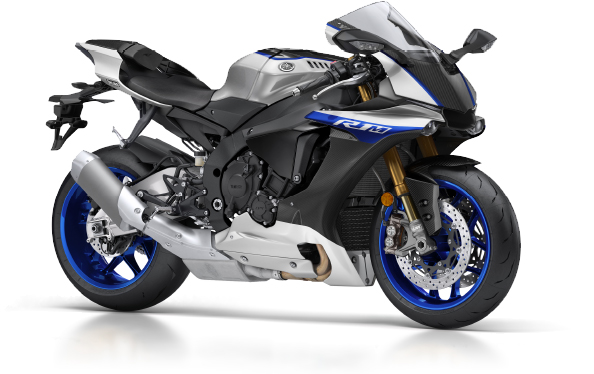
YAMAHA YZF-R1M
Completely revamped from the previous model, the circuit now chosen as the main battleground.
Technology from the factory-backed YZR-M1 was reflected, becoming the supersport model with the most number of electronic devices on board.
BATTLAX RACING STREET RS10
The first Bridgestone, the first high-grip original equipment tire ever to appear on the R1 series. Specs focused on transiency during rolls and ground contact during full banking at the highest speed zones.
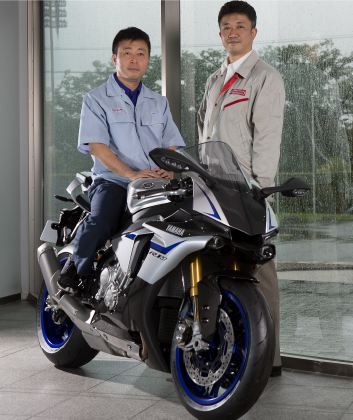
Even without saying a word, both sides knew that the answer lay in the world’s most demanding motorcycle race
Hirano took rider impressions of the R1M and technology from the factory-backed YZR-M1 as feedback. Mr. Aoki, in order to meet the difficult demands, developed the RS10 based on technology honed in the world’s most demanding motorcycle race.